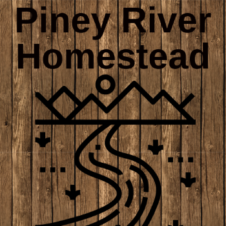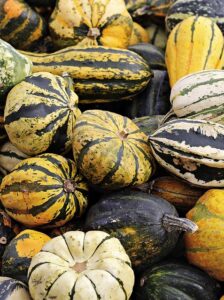The serene beauty of a Zone 6 fall garden is truly a sight to behold. As the vibrant summer hues slowly give way to the rich, warm tones of autumn, gardeners in this USDA Hardiness Zone find themselves presented with a unique opportunity to nurture the outdoors before the chill of winter sets in. Zone 6 includes regions in the United States with cold winters and hot summers, where the average minimum temperatures range from -10 to 0°F, making it a challenging yet rewarding zone for gardening enthusiasts.
In this detailed guide, we’ll explore the art and science of crafting a flourishing fall garden suited to the diverse and specific needs of Zone 6. From selecting the right plants to understanding the best practices for soil preparation, timing is everything in your autumnal horticultural endeavors. We’ll also cover techniques for extending the growing season, essential care and management strategies, and the crucial steps to prepare your garden for the dormant winter months. So grab your gloves and trowel, and let’s dig into the joy of Zone 6 fall gardening!
Understanding the Unique Climate of Zone 6
Before you begin sowing seeds or planning your plot, it’s vital to grasp the distinct climate characteristics that define Zone 6. With an average last frost date around the end of April and an average first frost around the third week of October, the growing season is relatively long, though fluctuating temperatures can pose challenges.
Zone 6A and 6B Variability
Keep in mind that Zone 6A and 6B may have differences; the lower end of this spectrum may experience colder temperatures and shorter growing seasons compared to the milder 6B areas.
Navigating Temperature Swings
Be prepared for sharp temperature swings as fall progresses. Early autumn may bring warm days and cool nights, while later in the season, frosts can become more frequent.
Selecting Suitable Plants for Fall Gardening
The success of your autumn garden hinges on the plants you choose. Opt for varieties that can withstand the cooler temperatures and shorter days of fall.
Hardy Perennials for Zone 6
Astilbe: Known for their feathery plumes, astilbes are a perennial favorite that adds texture to the garden.
Sedum: With its drought tolerance and showy flower heads, sedum is a staple for late-season color.
Coneflowers: These tough, native perennials provide structure and food for pollinators well into fall.
Annuals and Biennials to Brighten the Season
Pansies: These delightful flowers are not just for spring; they love the cool weather and add a splash of color to the fall garden.
Snapdragons: Their vibrant, vertical blooms bring an architectural element to fall flower beds.
Sweet Peas: With their lovely fragrance, sweet peas are an excellent choice for an early fall sowing.
Edible Ornamentals
Ornamental Kale and Cabbage: Both striking and tasty, ornamental kale and cabbage make for lovely additions to decorative fall plantings.
Chives: These perennials are great for a continuous harvest of their mild onion flavor, even in cooler temperatures.
Swiss Chard: The vibrant stems and hearty leaves of Swiss chard thrive in the fall and can usually tolerate light frosts.
Additional Vegetables for Fall Planting in Zone 6
Garlic: Planting garlic in the fall allows it to establish roots before the frost, ensuring a hearty harvest in the summer.
Spinach: This leafy green prefers cool weather and can produce a bountiful crop if planted in early fall.
Radishes: Fast-growing radishes can be sown in late summer or early fall, providing a crisp, peppery harvest in just a few weeks.
Broccoli: Ideal for a fall garden, broccoli planted at the end of summer can yield a rich harvest before the winter frosts.
Peas: Planting peas in late summer or early fall can result in a sweet, late-season crop, as peas thrive in cooler temperatures.
Soil Preparation and Maintenance
Healthy soil is the bedrock of any garden, and fall is the perfect time to give it a little extra attention.
The Importance of Fall Amendments
Organic Matter: Compost, well-rotted manure, and leaf mold are excellent choices to enrich your soil and enhance its structure.
Balancing pH: Conduct a soil test to determine if your garden beds need adjustments to their acidity levels, especially if you’re planning to grow specific crops next year.
Fertilization: Slow-release fertilizers can provide the nutrients your plants need over an extended period.
Mulching for Protection and Insulation
A layer of mulch around plants helps retain soil moisture, suppress weeds, and moderate soil temperature.
Organic Mulches: Shredded leaves, straw, and pine needles are natural options that break down over time, adding organic matter to the soil.
Mulching Techniques: Apply mulch to a depth of 2-3 inches, being careful to keep it away from plant stems to prevent rot and pest problems.
Planting Schedule and Techniques
As the days grow shorter, the window for planting closes. Precision and timeliness are crucial to optimal growth during the fall season.
Sowing Seeds for Success
Select seeds that have a short time to maturity and adjust the planting date to accommodate the time they need to grow before the first frost.
Transplanting: For a head start, consider transplanting seedlings into your garden rather than starting from seed.
Spacing: Follow recommended spacing for the plant variety to ensure proper air circulation and healthy growth.
Timing Is Everything
The Importance of Frost Dates: Knowing the average first frost date in your area will help you determine your planting window and avoid potential crop loss.
Early Plantings: Some plants benefit from early fall planting, giving them a chance to establish roots before winter arrives.
Garden Care and Management
With your plants in the ground, now is the time to pay extra attention to their well-being.
Pest Control and Disease Prevention
Pests and diseases can be more persistent in the fall as they seek shelter and the remaining greenery.
Vigilance: Regularly inspect your plants for signs of trouble, and address any issues promptly to prevent spread.
Natural Remedies: For a more organic approach, consider using insecticidal soaps and neem oil to combat garden pests.
Moisture Management
Balancing the right amount of water can be tricky during the fall, especially with unpredictable weather patterns.
Adjusting Irrigation: Reduce watering as the weather cools and the rainfall increases. Be mindful of overwatering to prevent root rot.
Garden Hydration Needs: Plants still need moisture, so continue to water as needed, checking the top inches of soil for dryness.
Extending the Growing Season in Zone 6
There are several methods to stretch the life of your fall garden and even produce well into winter.
Utilize Protective Structures
Row Covers: These lightweight materials can shield plants from frost and extend the growing season by a few weeks.
Cold Frames and Greenhouses: For more substantial protection, these structures offer an environment for plants to thrive in colder temperatures.
Create Microclimates: Strategic placement of plants on the sunniest and most sheltered spots in your garden can create warmer spots that mimic slightly higher zones.
Preparing Your Zone 6 Garden for Winter
Winter can be harsh, but thoughtful preparation can help your garden survive and thrive next spring.
Transitioning to Winter Vegetation
Remove Annuals: Clear out any annuals that are past their prime to prevent disease and pests from overwintering in the garden.
Cut Back Perennials: Prune back perennials after they’ve gone dormant, typically after a few frosts. This helps manage the spread of diseases and reduces places for pests to overwinter.
Soil and Root Management
Protect the Soil: Consider planting cover crops to protect your soil from erosion, increase organic matter, and fix nitrogen.
Mulching Perennials: Apply a hearty layer of mulch around the base of perennial plants to insulate the roots from the freezing temperatures.
Conclusion
Zone 6 fall gardening is an art of balance and timing. By selecting the right plants, preparing your soil, and employing the best practices, you can enjoy the natural beauty and the bounties of the season. With careful planning and execution, your Zone 6 autumn garden can be every bit as lush and inviting as its spring and summer counterparts.
The work doesn’t end when the leaves begin to fall; it transitions to preparations for the next gardening season. By taking the time to maintain your garden and protect it over the winter, you’ll ensure that it bursts into life with an abundance of growth come next spring.
Fall gardening in Zone 6 is more than a hobby; it’s a labor of love that rewards patience, resilience, and the wondrous cycles of nature. With these insights and a passion for the soil, you can elevate your autumn gardening and set the stage for a vibrant, sustainable oasis that thrives year-round. Enjoy the process, and may your Zone 6 fall garden inspire and excite you as it changes with the season.

